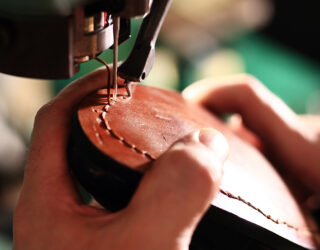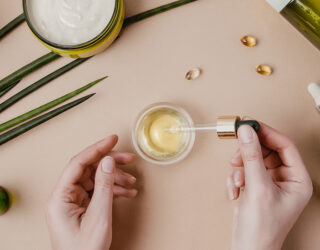A recent decision of the Examination Division of the European Patent Office has highlighted the importance of the need for creativity when drafting patents in the cosmetic sector in order to circumvent the prohibition on patenting methods of use for this type of product.
The cosmetic industry, which includes personal hygiene products, is one of the most advanced sectors in terms of innovation. Nevertheless, there are considerable obstacles to surmount if such innovations are to be protected with patent rights.
Product innovations in this sector are not solely confined to those with an aesthetic purpose, such as anti-ageing products, but they also include developments in well-being and skincare such as, for example, those relating to improving biological effects of the treated skin (eg. anti-inflammatories, immunomodulators etc.)
In general, the commercial activity of a cosmetic product can be supported by protection through patents that cover different aspects relating to a cosmetic product and its method of use. Therefore, with a view to obtaining the maximum protection possible, it would be desirable to obtain, as a minimum, and in order of preference, protection of the product ingredients, its formulation, specific forms of the product and the way in which it is used (method of use).
Protecting all these aspects of the cosmetic product with a patent requires – as in any other technical sector – strict compliance with the substantive requirements of patentability, novelty and inventive step. However, generally, the product ingredients, their formulation and/or the concrete forms of the product cannot be patented due to lack of novelty and/or invented step. In the light of this scenario, the only way of protecting the innovation relating to the cosmetic product would be protection of the “way the product is used” that is a patent protecting the method of use of the cosmetic.
When analyzing the patentability of a cosmetic method of use, in addition to compliance with the substantive requirements of patentability, novelty and inventive step, there is a further obstacle to be overcome, namely, avoiding application of the exception to patentability regulated under article 53(c) of the European Patent Convention (CPE) in accordance with which methods for treatment of the human or animal body by surgery or therapy and diagnostic methods practiced on the human or animal body are not patentable. The reason why it is pertinent to analyze whether or not the exception of article 53(c) EPC is applicable to the method of use for a cosmetic is the fact that any cosmetic, including personal hygiene products, is applied directly to the human body, that is, the way the product is used usually requires its direct application on the human body.
Thus, when assessing whether or not the exception of article 53(c) EPC is applicable to the method of use for the cosmetic, the European Patent Office (EPO) seeks to differentiate in terms of whether the effect produced following application of the product on the skin is cosmetic or therapeutic. If the effect is cosmetic, the exception to patentability pursuant to article 53(c) EPC would not be relevant. Conversely, if the alleged effect can be considered therapeutic, the exception of patentability pursuant to article 53(c) EPC would be applicable. Although a priori, such an examination could be obvious, the distinction between a cosmetic or therapeutic effect is not always so easy.
So what happens with the patentability of a product with antimicrobial properties such as, for example, the currently ubiquitous antiseptic gels? Is this exception applicable even though they are only marketed as personal hygiene products of a cosmetic nature?
The decision of the Technical Board of Appeal of the EPO of 19 May 2020 (Case T1916/19) concludes that with a view to assessing whether exclusion of patentability according to article 53(c) EPO is applicable, it is irrelevant whether the motivation for use of the product for which the patent is sought pursues a therapeutic or cosmetic purpose. The relevant aspect in this regard is whether use of the product inevitably (inherently) has a therapeutic effect. If this response is affirmative, protection of the method of use for the product will be affected by the exclusion from patentability pursuant to article 53(c) EPC.
In this case the decision affects European patent application No. 11719581.8, entitled “Skin treatment composition”, filed by Unilever N.V. and Unilever PLC, relating to a personal hygiene product, a gel for hand hygiene with high antimicrobial properties. The Technical Board of Appeal considered that the antimicrobial effect on the skin as produced by the product in question should be seen as having the effect of disinfecting the skin, that is, a prophylactic effect in respect of possible skin infections. Conclusion? In this case, the therapeutic antimicrobial effect cannot be disassociated from the cosmetic effect, and therefore the exclusion from patentability pursuant to article 53(c) EPC would be applicable to this case.
As a result of the foregoing, this application could only be granted for a product limited by its therapeutic use, in this case, that of having a therapeutic antimicrobial effect on the skin. Grant of the patent with this scope of protection would raise serious doubts about the effectiveness of patent protection if it were marketed as a personal hygiene product of a cosmetic nature. That is, if the owner of the patent wished to exploit it as a cosmetic personal hygiene product, grant of the patent with protection for a pharmaceutical product limited by its therapeutic use might well be insufficient, as protection of the product would not extend to its cosmetic use.
In short, this decision appears to highlight a need for creativity when proposing and drafting these types of patents in order to avoid as far as possible the limitations of article 53(c) EPO, and therefore, the scant margin provided to the cosmetic industry when patenting these types of innovation.
Mónica Arizti
Garrigues Intellectual Property Department






